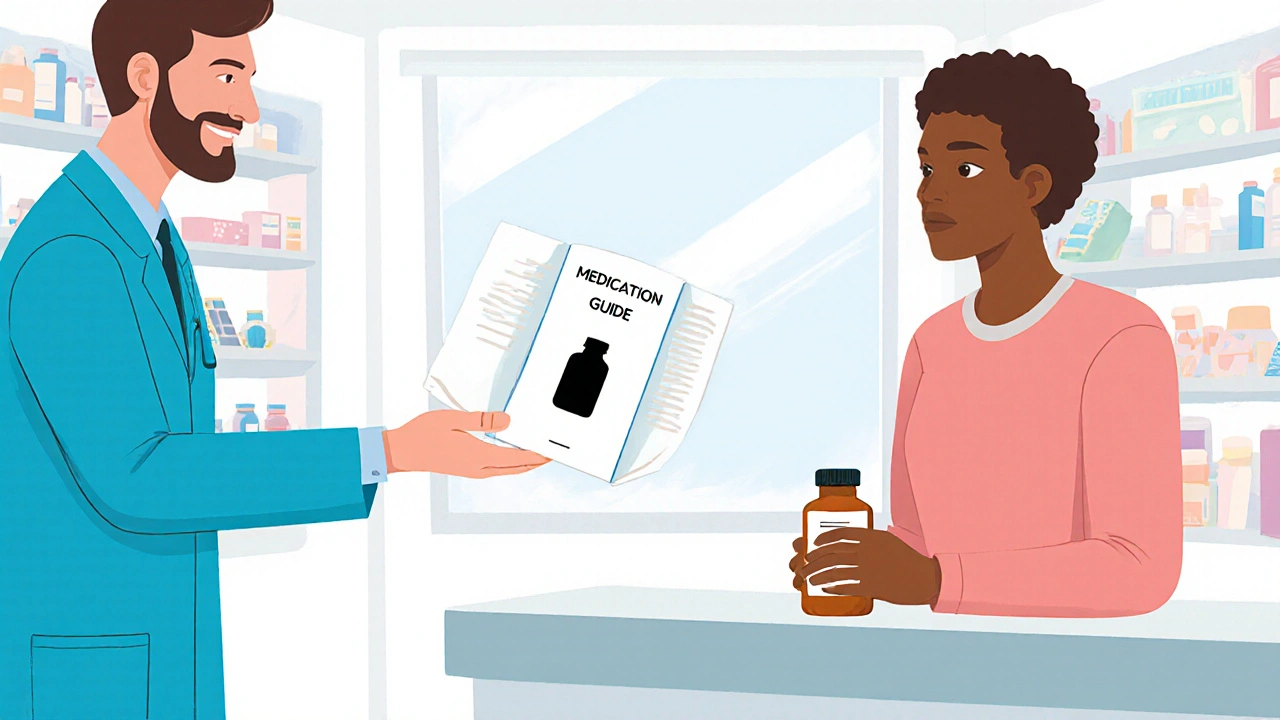
Medication Guides Explained: Why They’re Critical for Patient Safety
Learn what Medication Guides are, why the FDA mandates them, and how they protect patients from serious drug risks. Get clear steps to use these guides effectively.
When you pick up a prescription, the prescription drug labeling, the official text and symbols on a medication package that guide safe use, including dosage, warnings, and storage instructions. Also known as drug package insert, it’s not just paperwork—it’s your direct line to avoiding harmful mistakes. Every pill bottle, box, and blister pack carries this label because the law requires it. But most people skim it or ignore it entirely—until something goes wrong.
Prescription drug labeling doesn’t just list the dose. It tells you what to watch for: interactions with other meds, foods to avoid, when to call your doctor, and even how to store the drug so it doesn’t break down. For example, Lisinopril, an ACE inhibitor used for high blood pressure and heart failure, has labeling that warns against potassium supplements and pregnancy. Meanwhile, warfarin, a blood thinner that requires careful INR monitoring, has labeling that flags foods like kale and cranberry juice as potential risks. These aren’t random notes—they’re life-saving details tied directly to how the drug works in your body.
The labeling also changes over time. The FDA updates it when new side effects show up, when generic versions get approved, or when studies reveal better ways to use the drug. That’s why your 2023 bottle might have different warnings than your 2020 one. And if you’re buying meds online—like generic metformin, a common diabetes drug often purchased through online pharmacies—you need to check that the label matches what your doctor prescribed. Fake or mislabeled pills are out there, and the label is your first defense.
Here’s the truth: you don’t need a pharmacy degree to read a label. Look for the bolded warnings. Check the expiration date. Compare the pill color and shape to what you got last time. If the label says "take with food" and you’ve been taking it on an empty stomach, that could mean nausea, low blood sugar, or worse. If it says "avoid alcohol" and you’re drinking, you’re risking liver damage or dizziness. These aren’t suggestions—they’re instructions backed by real patient data.
And it’s not just about your own meds. Prescription drug labeling helps caregivers, nurses, and even family members know what to do if you can’t speak for yourself. That’s why it’s written in plain language now—no more Latin terms or confusing jargon. It’s meant to be understood by anyone who picks up the bottle.
Below, you’ll find real guides that dig into how labeling affects your daily choices—from how to store your blood pressure pills safely to why some drugs need special disposal methods. You’ll see how labels connect to common meds like Dostinex, Duloxetine, and Sildenafil, and why ignoring them can turn a simple treatment into a serious problem. These aren’t theory pieces. They’re practical, real-world breakdowns of what’s printed on the box—and what it really means for you.

Learn what Medication Guides are, why the FDA mandates them, and how they protect patients from serious drug risks. Get clear steps to use these guides effectively.